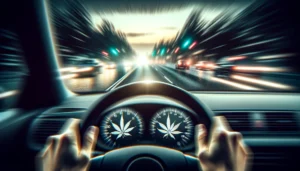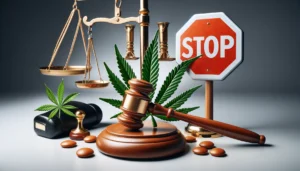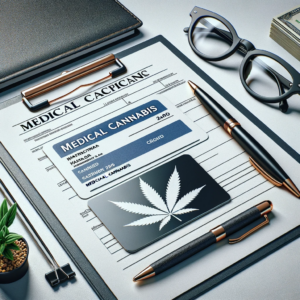The High Road: Can You Drive After Using Cannabis?
 To drive or not to drive after using cannabis is no longer a mere question of personal responsibility—it stands at the intersection of public safety and the law. Cannabis’s march towards decriminalization and legalization across various states is changing how we have historically viewed and regulated mind-altering substances. However, with this social shift comes a crucial conversation around driving under the influence.
To drive or not to drive after using cannabis is no longer a mere question of personal responsibility—it stands at the intersection of public safety and the law. Cannabis’s march towards decriminalization and legalization across various states is changing how we have historically viewed and regulated mind-altering substances. However, with this social shift comes a crucial conversation around driving under the influence.
The answer to whether you can drive after using cannabis is not as hazy as one might think—absolutely not, and here’s why.
The Science Behind Cannabis Impairment
When consumed, the active components of cannabis, chiefly delta-9-tetrahydrocannabinol (THC), are readily absorbed into the bloodstream and quickly reach the brain. The introduction of THC disrupts the function of neurotransmitters, altering the brain’s normal operation. This disruption can lead to a range of impairments in cognitive and motor functions.
Altered Perception and Coordination
Users might experience a delay in the brain’s processing of information, impairing their judgment and decision-making skills. Beyond increased reaction times, the coordination required to perform intricate driving maneuvers can be significantly diminished, jeopardizing personal safety and that of others on the road.
Slowed Reaction Times
Roadside emergencies are unpredictable and often require rapid responses. Cannabis consumption can lead to a delay in responding to these stimuli, which may be the difference between avoiding a collision and becoming a part of one.
Prolonged Effects of Cannabis
The high from cannabis might seem transient, but the aftereffects linger. Even when one feels sober, THC can still be present in the system, affecting cognition and motor skills. It’s not uncommon for residual impairment to persist several hours, or even days, after use.
The Legal View
Laws regarding cannabis use and driving are rapidly evolving, but a general trend is emerging—it’s illegal to drive under the influence of cannabis. This means that law enforcement agencies are cracking down, with sobriety tests and specialized drug recognition experts becoming standardized practices for identifying and charging impaired drivers.
Legal consequences for driving under the influence of cannabis can include fines, license suspension, and even imprisonment. More significantly, being convicted of driving under the influence can carry long-term consequences for employment, insurance rates, and one’s personal record.
Roadside Testing
In a bid to tackle the rise in cannabis-related driving incidents, police agencies are implementing a variety of roadside tests to detect suspect impairment. Unlike traditional breath alcohol tests, these tests focus on identifying markers of recent cannabis use. Saliva tests that can detect THC, along with standardized field sobriety tests, are becoming common methods for law enforcement officers to gather evidence of impairment.
While the frequency and acceptability of these tests vary by location, understanding the measures designed to identify impairment is essential for any cannabis user who operates a vehicle.
Medical Cannabis and the Law
For individuals who use cannabis medicinally, the legality of driving post-consumption can be even more complex. Medical cannabis laws often fall under broader regulations around impaired driving, meaning that even with a prescription, driving while impaired is still illegal.
Patients must consult with their healthcare providers to understand the potential effects of their medication on their driving abilities and what steps they can take to ensure they stay in compliance with the law.
Safe and Responsible Driving Practices
The bottom line for cannabis users is simple—do not drive under the influence. Even if you feel confident in your driving abilities, the risk of causing an accident due to cannabis-related impairment is significant.
To ensure that roads remain safe, recreational users must understand the risks associated with cannabis consumption, while medical users must be extra vigilant about the impact of their treatment. Strategies for responsible cannabis use include designated drivers, ridesharing services, and waiting an appropriate amount of time post-consumption before getting behind the wheel.
Conclusion
 The landscape of cannabis use and regulation is changing, and nowhere is this more evident than in the realm of driving under the influence. With increasing legalization comes a mounting public awareness of the risks and a more stringent approach to enforcement.
The landscape of cannabis use and regulation is changing, and nowhere is this more evident than in the realm of driving under the influence. With increasing legalization comes a mounting public awareness of the risks and a more stringent approach to enforcement.
Cannabis might be a part of our future, but elevated public safety standards around driving are an integral part of this future. Whether you partake for recreational enjoyment or medical necessity, it’s imperative to consider the implications on your personal safety and that of others on the road. Responsible consumption is not just a personal ethos—it’s a social obligation.
For additional clarity on the laws and best practices, community and health advocacy organizations are excellent resources. Engaging with these groups can provide a deeper understanding of local regulations and the most effective methods for enjoying cannabis without putting one’s life or the lives of others at risk.
In summary, enjoy your cannabis responsibly—and if you plan to drive, make sure your system is cleared of any impairing compounds. Your decisions on the road have a lasting impact, so make sure that they’re informed and grounded in safety. Drive smart, drive safe.



